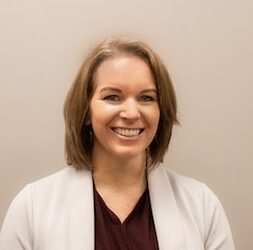Published on October 9, 2019 in the SWTimes
Written by Jadyn Watson-Fisher
On about 350 acres at Chaffee Crossing is a medical school and source of development in the River Valley.
The campus of Arkansas Colleges of Health Education, founded five years ago, sits between Fort Smith and Barling, providing economic benefits for both cities while training new osteopathic doctors through its college of osteopathic medicine, at least for now.
“This is just the beginning of fulfilling the ACHE mission and the dream of changing health care as we know it,” said ACHE Board Chairman David Craig at the five-year celebration.
CEO Kyle Parker said the goal of the institution is to create health-care professions who want to work in rural and underserved communities. He told attendees of the Fort Smith Regional Chamber of Commerce First Friday Breakfast in January the college wants everyone — regardless of income, race, ethnic background, sexual orientation, gender or religion — to have access to quality healthcare.
The college accepted 150 students out of 5,000 applicants for this year’s class, and Parker said why the candidates wanted to go into medicine and their willingness to serve residents through simple community outreaches were the most important part of their applications. A lot of people can become excellent healthcare professionals, but not all of them desire to work with the poor and overlooked.
“What’s so important to us is what’s in these students’ hearts,” Parker said. “What we want to know is what’s sitting inside their heart. Who are you as a person? Do you truly care for somebody. Can we get you to serve in one of the most underserved areas in the United States?”
The first of four
The Arkansas College of Osteopathic Medicine was the first college to open with an inaugural class starting its education in 2017.
Fort Chaffee Redevelopment Authority Marketing Director Lorie Robertson previously said there wasn’t anything on Chad Colley Boulevard, the street running through campus, five years ago. Now, the campus has grown and become a fixture in the community.
ARCOM and its success, becoming a nationally recognized medical education institution, is something to be proud of on its own. The college and its leadership strives to teach more. It wants students to practice safe and compassionate medicine.
Medical students are provided opportunities to learn anatomy on body donors, which they say is invaluable to their education. But ARCOM doesn’t just send a thank you card; it holds an annual memorial service recognizing the individuals, whom they know little about, and their families.
“We’re osteopathic students, so we’re especially interested in this integrated, holistic approach to science and medicine,” student physician Tana Becker-Sievert previously told the Times Record. “It’s a difficult decision to make, but I hope they find solace in knowing that what we gained from that experience is so impacting and we’ll remember it forever. It’s impossible not to carry it with you.”
The service is a time for families to receive a memento of thanks, and honor their loved ones who didn’t receive traditional services with viewings because of the body preservation process.
Students are also trained in simulation labs, giving them opportunities to practice what they learned before interacting with live patients. This allows them to make mistakes in a hospital room and in simulated appointments with community actors to work through any nerves and “freezing.”
“When they go out in the real world scenario, they’ve simulated it so many times it becomes second nature to them, so they don’t have mishaps or missteps in the care they need to provide,” said Dr. Harvey Potts, ARCOM executive director of simulation and clinical skills. “Overall, the whole end game is to create competent physicians and provide patient safety for the individual and community as a whole.”
Another way for the college to honor the donors is through the construction of a garden and wellness park, to which Parker donated $100,000. The area will feature a space to reflect and spread ashes of the deceased, while the park will provide workout equipment, a playground, walking trail, small lake and green space.
Several residential additions are being built in the area, including “The Cottages” by mother-daughter duo Kathy Coleman and Elizabeth Voris, which were designed with the students in mind. ACHE is working on its own housing and commercial area called the “Village at Heritage.”
The development includes apartments, townhomes, courtyard homes and commercial amenities such as restaurants and a fitness studio.
Growth on the campus and in the Chaffee Crossing area, Parker hopes, will be a catalyst that makes students “fall in love” with the area. He said in January the school and its surrounding communities have four years of medical school and three years of residency to show the students that Arkansas is the greatest place on earth to live, so they can continue serving patients in the state.
ACHE plans to open its College of Health Sciences for physical and occupational therapy in 2021, and it expects to have a combined total of 1,000 students by 2022.
The institution announced this year programs for medical residencies, fellowships and a master of science and biomedicine.
“We want to make a difference in people’s lives,” Parker said. “That’s why I came out of retirement to do this. It wasn’t for the money. It’s for the mission.”

